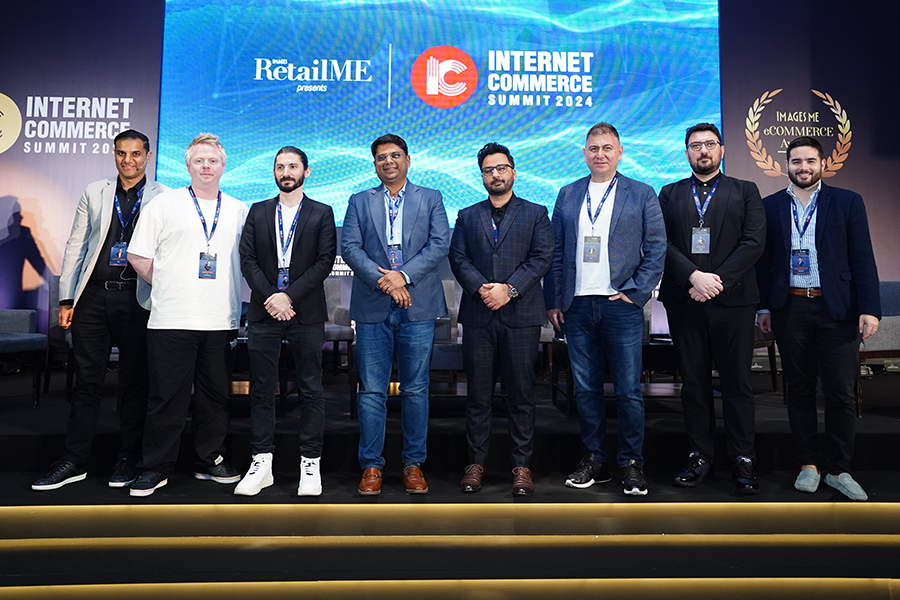
#UnifiedUniverseUnraveled: The art of seamless retail session, ICS MENA 2024
With the blurring of the lines between online and offline shopping, consumers now expect a unified and immersive experience across channels. So, what are brands doing to meet these changing customer expectations?
Over 55% of Middle East customers understand omnichannel and they prefer to shop from retailers who offer them an omnichannel experience, shared Sundeep Khanna, Partner, Deloitte while setting the stage for a panel discussion that he steered at the Internet Commerce Summit (ICS) MENA 2024.
“For many years channels have worked in silo. It could be the store or online and then came omnichannel, wherein we must ensure having full visibility of stock (mainly) whether it’s in the warehouse, distribution centre or the store. Whatever the channel, its crucial for brands to be unified offering customers the same experience across channels, while also accessing and leveraging customer data judiciously to take strategic decisions driven by that data,” opined Aurelien Cuellar, Director Technology & Omnichannel, Chalhoub Group.
Interestingly, a majority of Chalhoub Group’s revenues are driven by the retail stores (85%) versus online. Having said that, online is growing year-on-year and the Group is committed to constantly undertake digital transformation initiatives.
Enabling organisations to create omnichannel experiences, Tayfun Topkoç, EVP, Global Growth, Akinon agreed that it’s not so much about the channel but more about unifying these channels to create a seamless experience for the customer. “As a unified commerce provider our job is to integrate the front-end channels with the back-end systems seamlessly creating a single platform for our customer and a seamless experience for the end user from browsing to buying to fulfilment. And we have created a unified commerce architecture offering flexibility and fastest time-to-market to our customers to also integrate to any marketplaces.”
A recent study from Tabby indicates that 55% of the purchase decision relies on the product, shared Jonathan Flender, Vice President – Digital & Omni, GMG. “The rest is the experience taking into consideration the lack of time from customers. In essence seamless is the absence of friction and frustration and the ability to offer the fastest path to purchase. With the retail universe flooded with products, services and ads, starting with the ‘why’ is pivotal while creating a seamless experience, which should come from a deep place of trying to solve a problem for the consumer.”
Switching fashion collections every 45 days, supply chain and planning are critical components for Sharaf Retail, shared the company’s Head of Digital Transformation, Eshan Walia. Doing the planning at the right time and getting the right kind of data is important. At the same time, processing that data and converting it into right information is also important. Using Generative AI and new assistive technologies, the organisation is upgrading its applications at the back end to offer customers a seamless experience across channels.
Staying with supply chain, Sédat First, Chief Digital Officer, Flormar said, “We have e-commerce presence in 40 countries, physical stores in 70-plus countries with wholesale presence across 100,000 touchpoints. Supply chain, thus, plays an enormous role. If I had to highlight a tech piece that enhances the omnichannel shopping journey its digital shelf availability online, on marketplaces and across wholesale touchpoints, and interestingly, the journey starts at brick-and-mortar.”
Next up is the importance of inventory visibility and accuracy to enable journeys like buying online and pick up in store or reserve in store and so on. In this context, Bappaditya Banerjee, Director of Technology, Brands For Less said, “Being an off-price retailer, we focus on the width over depth. Our customer purchase in bulk supported by deals. Hence, inventory is crucial for us, and we are moving towards a single view of inventory to create a common pool of inventory for the offline and online space. We are in the process of implementing a more robust order management system and a more modern warehouse management system to enable a single view of inventory. We’ve also implemented an RFID enabled checkout process for 90% of products in stores.”
From data, inventory and supply chain to social commerce, a market that’s estimated to touch $2.9 trillion globally. A good example is a UAE-based, purpose centred homegrown brand that launched in 2020 and has built a great brand resonance. The Giving Movement has successfully created “a desire” among the consumer community to buy from. “We’ve done a really good job online by creating discovery touchpoints across social platforms,” stated Marc Jaffrey, CTO, The Giving Movement. “But last year, we realised that online can’t be our only channel and we opened a physical touchpoint within THAT Concept Store in Mall of the Emirates offering a unified, personalised and engaging shopping experience by levering artificial intelligence and integrating it with the human touch.”
Notifications